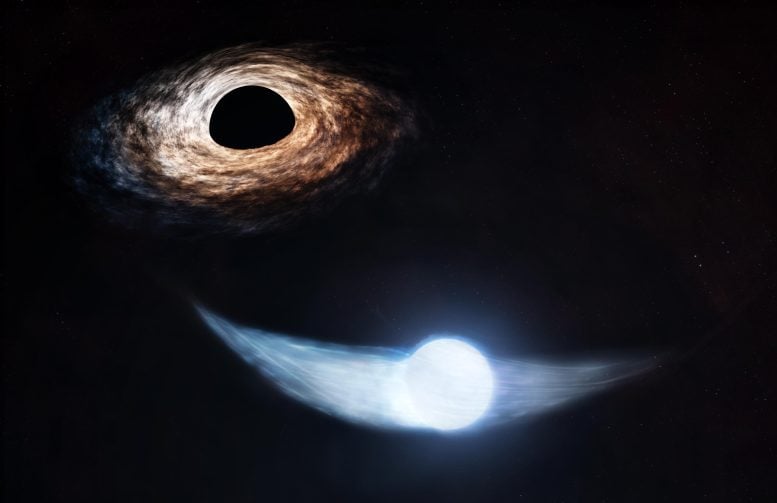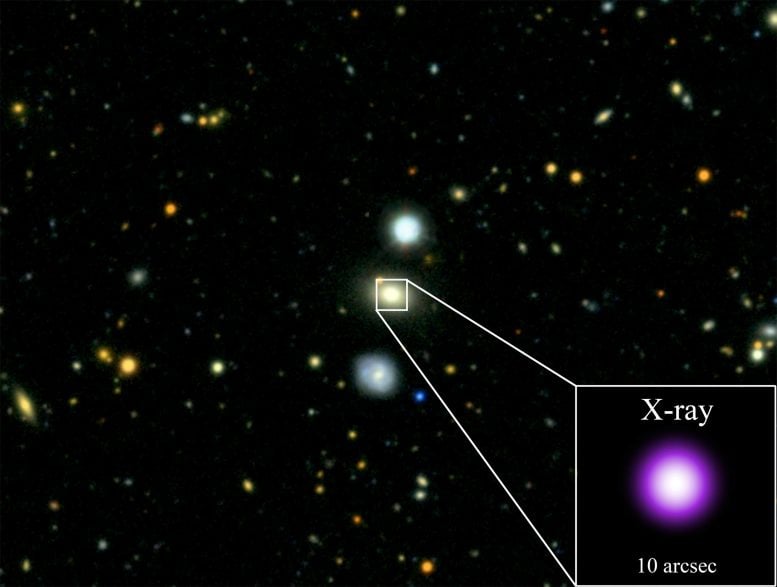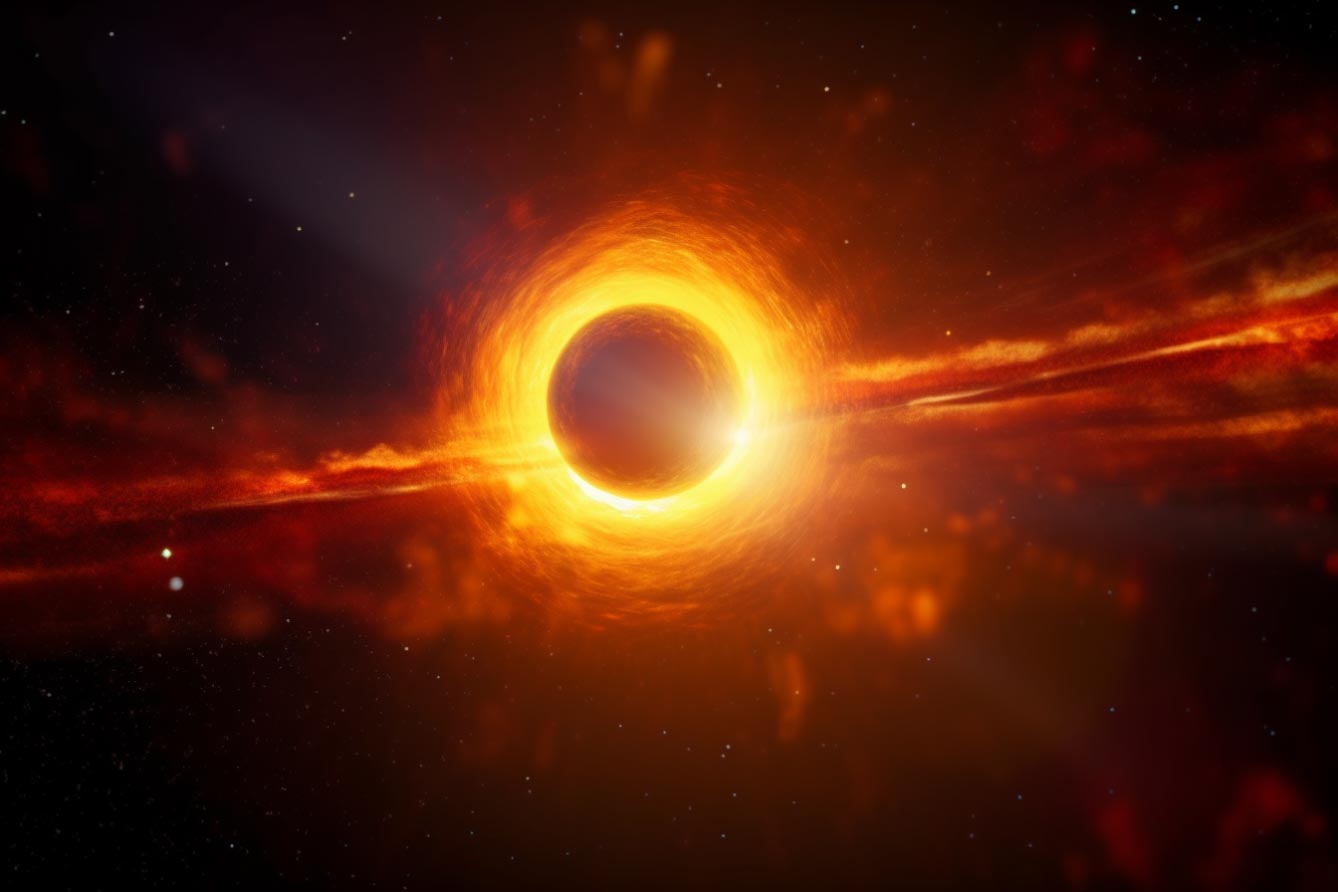A team of astronomers has observed a star in a distant galaxy repeatedly interacting with a supermassive In 2018, the optical All Sky Automated Survey for SuperNovae noticed this system had become much brighter. After observing it with 
Unusual Stellar Survivor: A Black Hole’s Repetitive Feast
A Star’s Cosmic Dance with a Black Hole
However, about two years later, the X-ray and UV light from the galaxy got much brighter again. According to astronomers, the most plausible explanation was that the star likely survived the initial gravitational grab by the black hole and then entered a highly elliptical orbit with the black hole. During its second close approach to the black hole, more material was pulled off, producing more X-ray and UV light.
These results were published in a 2023 paper in the New data obtained by Chandra and Swift after the 2023 paper was completed gives the researchers an even better estimate of how long it takes the star to complete an orbit, and future mealtimes for the black hole. They determine that the star makes its closest approach to the black hole about once every three and a half years. “We think that a third meal by the black hole, if anything is left of the star, will begin between May and August of 2025 and last for almost two years,” said Eric Coughlin, a co-author of the new paper, from Syracuse University in New York. “This will probably be more of a snack than a full meal because the second meal was smaller than the first, and the star is being whittled away.” The authors think that the doomed star originally had another star as a companion as it approached the black hole. When the stellar pair got too close to the black hole, however, the gravity from the black hole pulled the two stars apart. One entered the orbit with the black hole, and the other was tossed into space at high speed. “The doomed star was forced to make a drastic change in companions — from another star to a giant black hole,” said co-author Muryel Guolo of Johns Hopkins University in Baltimore. “Its stellar partner escaped, but it did not.” The team plans to keep following AT2018fyk for as long as they can to study the behavior of such an exotic system. For more on this discovery, see Cosmic Clockwork Decoded in Black Hole Feeding Patterns. Reference: “A Potential Second Shutoff from AT2018fyk: An Updated Orbital Ephemeris of the Surviving Star under the Repeating Partial Tidal Disruption Event Paradigm” by Dheeraj Pasham, E. R. Coughlin, M. Guolo, T. Wevers, C. J. Nixon, Jason T. Hinkle and A. Bandopadhyay, 14 August 2024, The Astrophysical Journal Letters. NASA’s Marshall Space Flight Center manages the Chandra program. The Smithsonian Astrophysical Observatory’s Chandra X-ray Center controls science from Cambridge Massachusetts and flight operations from Burlington, Massachusetts.
DOI: 10.3847/2041-8213/ad57b3











/https://tf-cmsv2-smithsonianmag-media.s3.amazonaws.com/filer_public/34/31/3431771d-41e2-4f97-aed2-c5f1df5295da/gettyimages-1441066266_web.jpg)







Discussion about this post